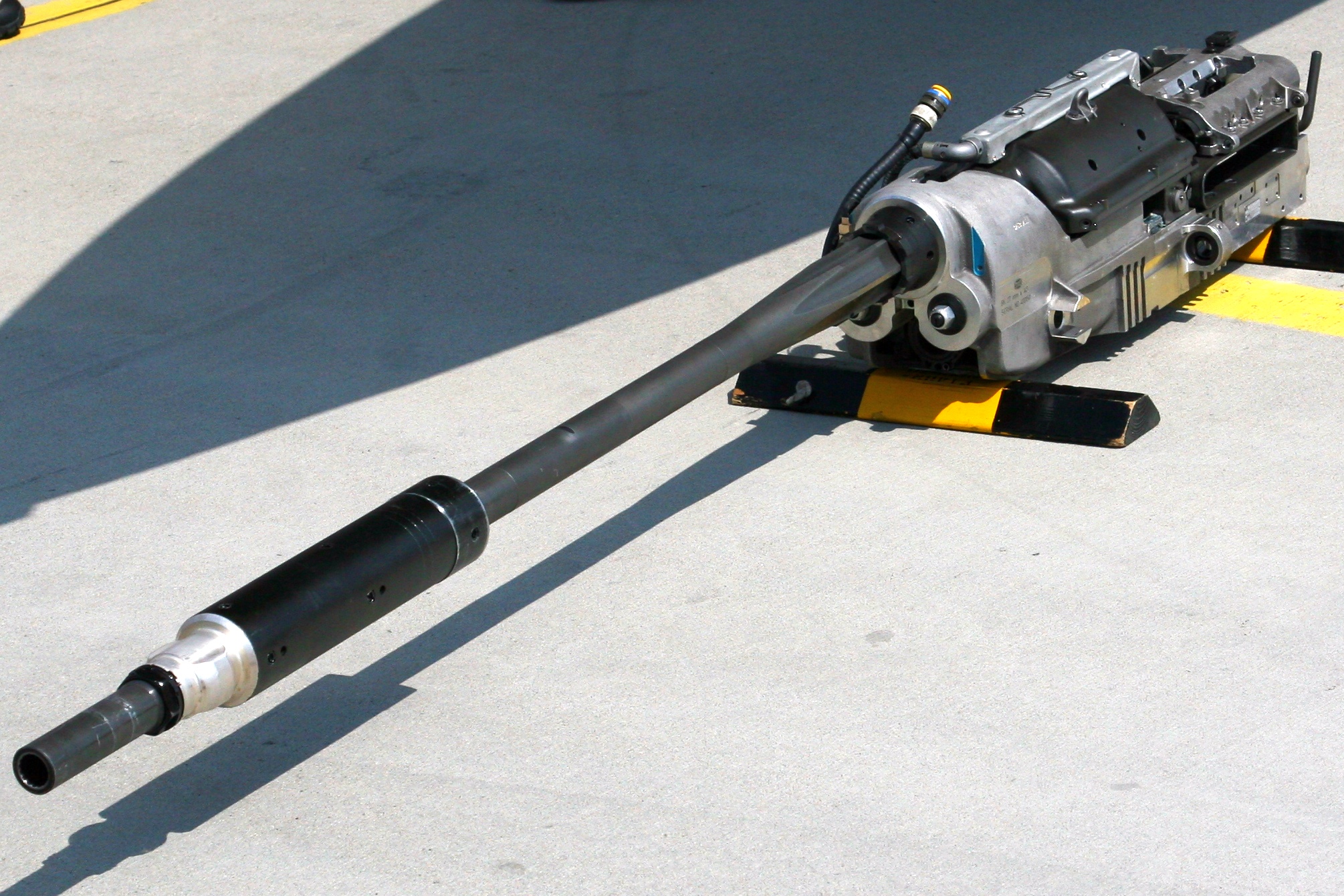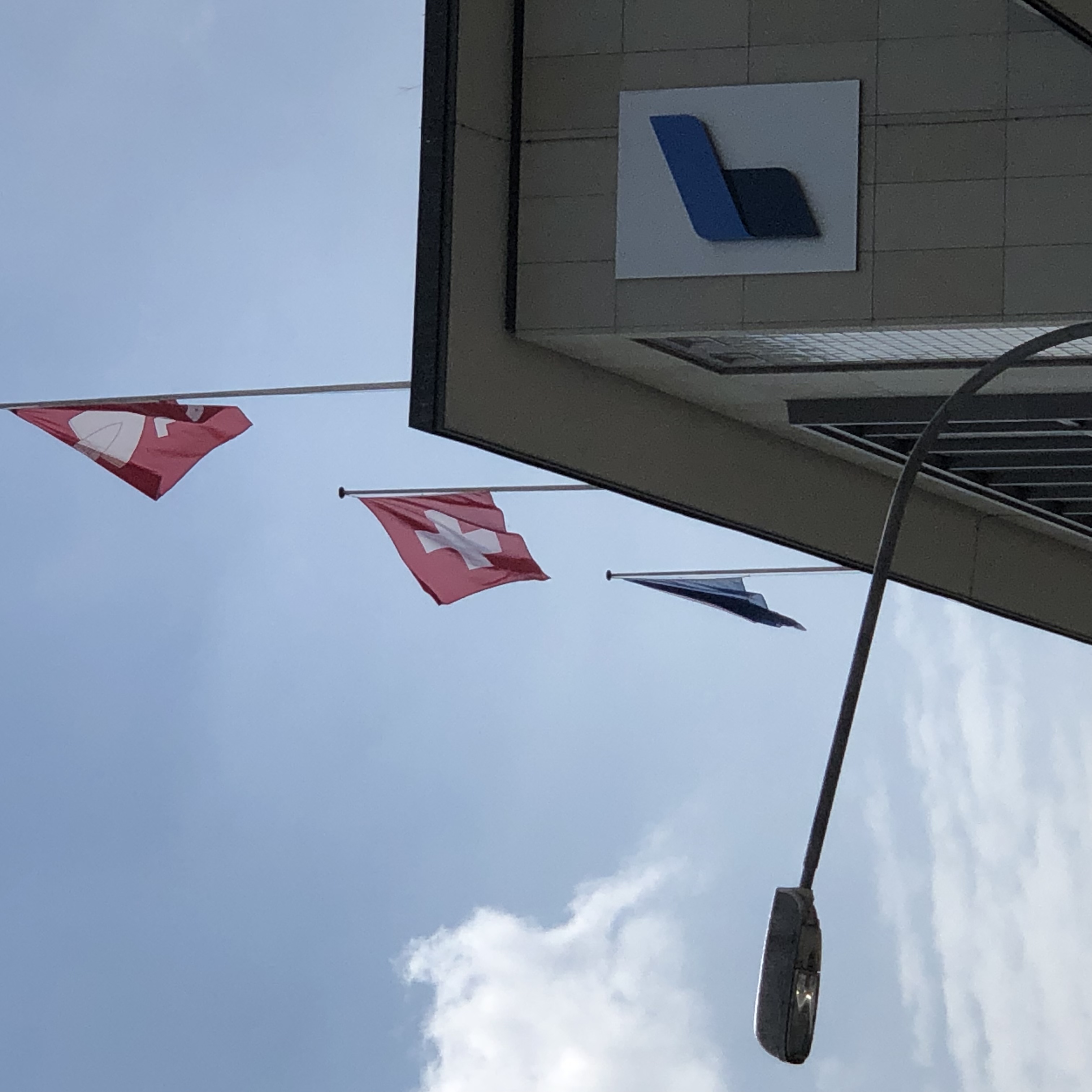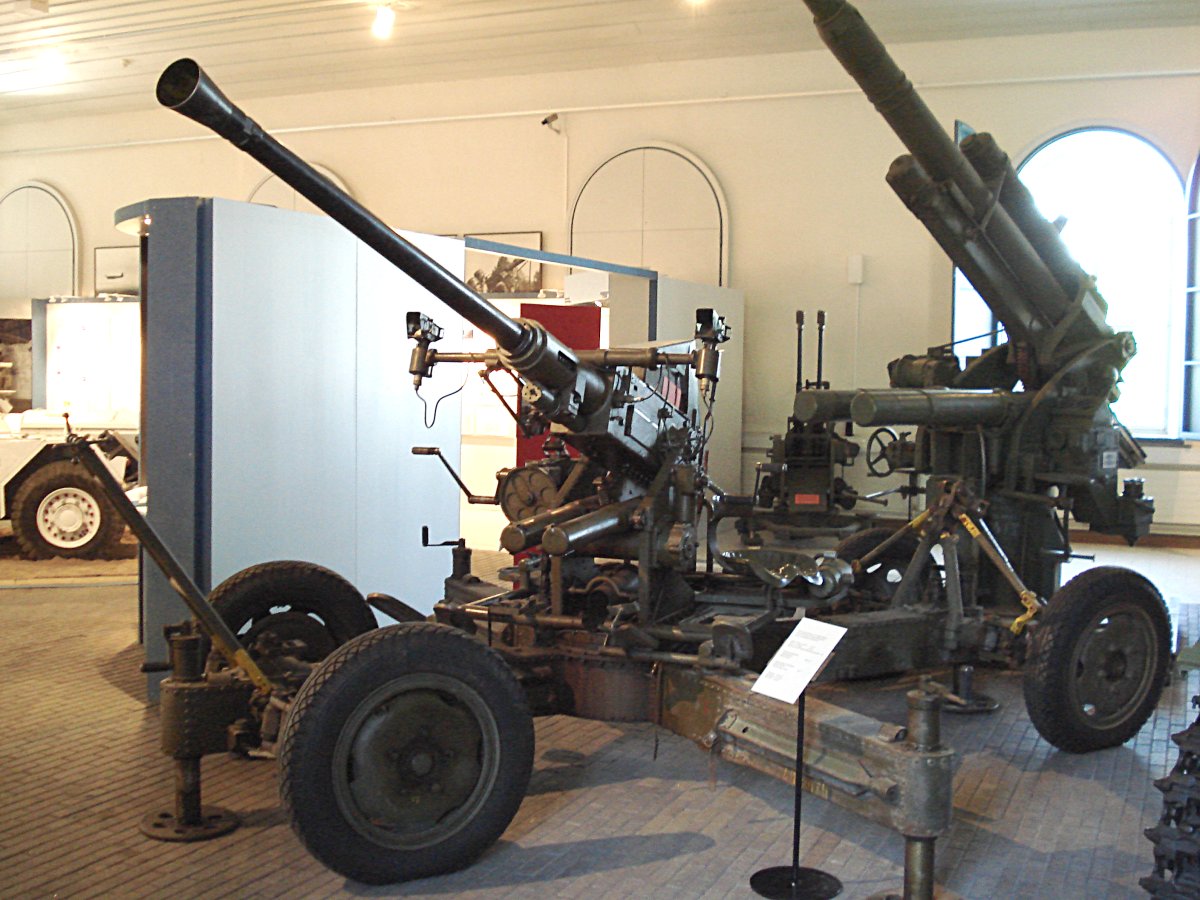|
Red Queen (anti-aircraft Gun)
Red King and Red Queen were experimental revolver cannon anti-aircraft guns developed for the British Army during the 1950s. Red King was a two-barrel design from Oerlikon, Red Queen was a single-barrel water-cooled design. The project was cancelled with the introduction of the Bofors 40 mm/L70, which became the standard anti-aircraft gun for the Army until it was replaced by the Rapier missile in the 1970s. History Red King In the late 1940s the British Army began the process of replacing their Bofors 40 mm L/60 gun guns. The introduction of higher-performance aircraft, especially jet-powered fighter-bombers and light bombers, proved to fly so fast that they exited the effective range of the Bofors before it could get enough rounds out to have a reasonable possibility of hitting the target. A gun with higher ballistic performance would increase the range, and thus reaction time, and a much higher firing rate was also desirable. Oerlikon heard of the concept and proposed an en ... [...More Info...] [...Related Items...] OR: [Wikipedia] [Google] [Baidu] |
Revolver Cannon
A revolver cannon is a type of autocannon, commonly used as an aircraft gun. It uses a cylinder with multiple chambers, similar to those of a revolver handgun, to speed up the loading-firing-ejection cycle. Some examples are also power-driven, to further speed the loading process. Unlike a rotary cannon, a revolver cannon only has a single barrel, so its spun weight is lower. Automatic revolver cannons have been produced by many different manufacturers. History Precursors An early precursor was the Puckle gun of 1718, a large flintlock revolver gun, manually operated. The design idea was impractical, far ahead of what 18th century technology could achieve. During the 19th century, Elisha Collier and later Samuel Colt used the revolver action to revolutionize handguns. William A. Alexander of Mobile, Alabama, invented a Rapid Firing Cannon Gun made from a design by Captain Weingard, both of whom also helped build the submarine . The gun was the prototype for the Gatlin ... [...More Info...] [...Related Items...] OR: [Wikipedia] [Google] [Baidu] |
Anti-aircraft Gun
Anti-aircraft warfare (AAW) is the counter to aerial warfare and includes "all measures designed to nullify or reduce the effectiveness of hostile air action".AAP-6 It encompasses surface-based, subsurface ( submarine-launched), and air-based weapon systems, in addition to associated sensor systems, command and control arrangements, and passive measures (e.g. barrage balloons). It may be used to protect naval, ground, and air forces in any location. However, for most countries, the main effort has tended to be homeland defense. Missile defense is an extension of air defence, as are initiatives to adapt air defence to the task of intercepting any projectile in flight. Most modern anti-aircraft (AA) weapons systems are optimized for short-, medium-, or long-range air defence, although some systems may incorporate multiple weapons (such as both autocannons and surface-to-air missiles). 'Layered air defence' usually refers to multiple 'tiers' of air defence systems which, w ... [...More Info...] [...Related Items...] OR: [Wikipedia] [Google] [Baidu] |
British Army
The British Army is the principal Army, land warfare force of the United Kingdom. the British Army comprises 73,847 regular full-time personnel, 4,127 Brigade of Gurkhas, Gurkhas, 25,742 Army Reserve (United Kingdom), volunteer reserve personnel and 4,697 "other personnel", for a total of 108,413. The British Army traces back to 1707 and the Acts of Union 1707, formation of the united Kingdom of Great Britain which joined the Kingdoms of Kingdom of England, England and Kingdom of Scotland, Scotland into a Political union, single state and, with that, united the English Army and the Scots Army as the British Army. The Parliament of England, English Bill of Rights 1689 and Convention of the Estates, Scottish Claim of Right Act 1689 require parliamentary consent for the Crown to maintain a peacetime standing army. Members of the British Army swear allegiance to the Charles III, monarch as their commander-in-chief. The army is administered by the Ministry of Defence (United Kingd ... [...More Info...] [...Related Items...] OR: [Wikipedia] [Google] [Baidu] |
Oerlikon Contraves
Rheinmetall Air Defence AG is a division of German armament manufacturer Rheinmetall, created when the company's Oerlikon Contraves unit was renamed on 1 January 2009 and integrated with Rheinmetall's other air-defence products. Oerlikon Contraves was a Swiss anti-aircraft artillery manufacturer famous for its adaptation of the 1916 20 mm Becker as the Oerlikon 20 mm autocannon design, which was used in the Second World War and remains in use. Copies and derivatives of these designs were made by German, French, British, and Japanese weapon manufacturers. Oerlikon Contraves was purchased by Rheinmetall in 1999. , Rheinmetall Air Defence had around 1,050 employees at locations in Switzerland, Germany, Italy, and Canada. The group's sales were about . History Oerlikon's earliest predecessor was Schweizerische Werkzeugmaschinenfabrik Oerlikon, founded in the Oerlikon district of Zürich, Switzerland in 1906. In 1923 it acquired a factory in Germany. It entered the anti-ai ... [...More Info...] [...Related Items...] OR: [Wikipedia] [Google] [Baidu] |
Bofors 40 Mm Automatic Gun L/70
The Bofors 40 mm Automatic Gun L/70, (Bofors 40 mm L/70, Bofors 40 mm/70, Bofors 40/70 and the like), is a multi-purpose autocannon developed by the Swedish arms manufacturer AB Bofors (today BAE Systems Bofors) during the second half of the 1940s as a modern replacement for their World War II-era Bofors 40 mm L/60 gun-design. It was initially intended as a dedicated anti-aircraft weapon, being sold as ''Bofors 40 mm Automatic A.A. Gun L/70'', but has since its conception been redeveloped into a dedicated multi-purpose weapon capable of firing both sabot projectiles and programmable ammunition. The 40 mm L/60 was introduced in 1932 and was a useful weapon for its era, being widely used among many forces and produced under license in several countries. The introduction of faster fighter-bombers and especially the widespread introduction of jet-powered aircraft in the post-war era severely limited its abilities. The L/70 was designed to improve both its opera ... [...More Info...] [...Related Items...] OR: [Wikipedia] [Google] [Baidu] |
Rapier Missile
Rapier is a surface-to-air missile developed for the British Army to replace their towed Bofors 40/L70 anti-aircraft guns. The system is unusual as it uses a manual optical guidance system, sending guidance commands to the missile in flight over a radio link. This results in a high level of accuracy, therefore a large warhead is not required. Entering service in 1971, it eventually replaced all other anti-aircraft weapons in British Army service; both the Bofors guns used against low-altitude targets and the Thunderbird missile used against longer-range and higher-altitude targets. As the expected air threat moved from medium-altitude strategic missions to low-altitude strikes, the fast reaction time and high manoeuvrability of the Rapier made it more effective than either of these weapons, replacing most of them by 1977. Rapier was later selected by the RAF Regiment to replace their Bofors guns and Tigercat missiles. It also saw international sales. In October 2021, it was re ... [...More Info...] [...Related Items...] OR: [Wikipedia] [Google] [Baidu] |
Bofors 40 Mm L/60 Gun
The Bofors 40 mm Automatic Gun L/60 (often referred to simply as the "Bofors 40 mm gun", the "Bofors gun" and the like, see name) is an anti-aircraft autocannon, designed in the 1930s by the Swedish arms manufacturer AB Bofors. The gun was designed as an intermediate anti-aircraft gun, filling the gap between fast firing close-range small calibre anti-aircraft guns and slower firing long-range high calibre anti-aircraft guns. For its time, the Bofors 40 mm L/60 was perfectly suited for this role and outperformed competing designs in the years leading up to World War II in both effectiveness and reliability. It entered the export market around 1932 and was in service with 18 countries by 1939. Throughout World War II it became one of the most popular and widespread medium-weight anti-aircraft guns. It was used by the majority of the western Allies and some Axis powers such as Nazi Germany and Hungary. In the post-war era, the Bofors 40 mm L/60 design was not ... [...More Info...] [...Related Items...] OR: [Wikipedia] [Google] [Baidu] |
Fighter-bomber
A fighter-bomber is a fighter aircraft that has been modified, or used primarily, as a light bomber or attack aircraft. It differs from bomber and attack aircraft primarily in its origins, as a fighter that has been adapted into other roles, whereas bombers and attack aircraft are developed specifically for bombing and attack roles. Although still used, the term fighter-bomber has less significance since the introduction of rockets and guided missiles into aerial warfare. Modern aircraft with similar duties are now typically called multirole combat aircraft or strike fighters. Development Prior to World War II, general limitations in available Aircraft engine, engine and Aerospace engineering, aeronautical technology required that each proposed military aircraft have its design tailored to a specific prescribed role. Reciprocating engine, Engine power grew dramatically during the early period of the war, roughly doubling between 1939 and 1943. The Bristol Blenheim, a typical ... [...More Info...] [...Related Items...] OR: [Wikipedia] [Google] [Baidu] |
Light Bomber
A light bomber is a relatively small and fast type of military bomber aircraft that was primarily employed before the 1950s. Such aircraft would typically not carry more than one ton of ordnance. The earliest light bombers were intended to drop their bombs in level flight over a target. During World War I some air forces began to distinguish between light bombers and the earliest purpose-built attack aircraft which carried out ground attack, close air support, anti-shipping and similar missions. After World War I, attack aircraft were typically identifiable by their ability to carry multiple fixed machine guns, automatic cannons and rockets in addition to bombs. Light bombers have often served as attack aircraft and vice versa. Purpose-built light bombers disappeared from military aviation by the end of World War II, as advancements in propulsion and aeronautical design enabled newer attack/strike aircraft, fighter-bombers, and multirole aircraft types to deliver equal ... [...More Info...] [...Related Items...] OR: [Wikipedia] [Google] [Baidu] |
Ministry Of Supply
The Ministry of Supply (MoS) was a department of the UK government formed on 1 August 1939 by the Ministry of Supply Act 1939 ( 2 & 3 Geo. 6. c. 38) to co-ordinate the supply of equipment to all three British armed forces, headed by the Minister of Supply. A separate ministry, however, was responsible for aircraft production, and the Admiralty retained responsibilities for supplying the Royal Navy.Hornby (1958) During the war years the MoS was based at Shell Mex House in The Strand, London. The Ministry of Supply also took over all army research establishments in 1939. The Ministry of Aircraft Production was abolished in 1946, and the MoS took over its responsibilities for aircraft, including the associated research establishments. In the same year, it also took on increased responsibilities for atomic weapons, including the H-bomb development programme. The Ministry of Supply was abolished in late 1959 and its responsibilities passed to the Ministry of Aviation, the War Of ... [...More Info...] [...Related Items...] OR: [Wikipedia] [Google] [Baidu] |
Green Mace
Green Mace, also known as the QF 127/58 SBT X1, is a prototype British heavy Anti-aircraft warfare, anti-aircraft gun that was developed in the early 1950s. It used a variety of techniques to improve the firing rate and velocity of its projectiles. It was rendered obsolete by the development of the guided surface-to-air missile and thus never entered production, with only a single prototype surviving. History Green Mace was the Rainbow Code assigned to the QF 127/58 SBT X1 during its development. The original specifications were for a gun with water-cooled barrel, firing folding-fin discarding sabot (firearms), sabot dart projectiles. Two rotary magazines, each holding 14 rounds, would allow for a high rate of fire on the order of 75 rounds per minute (RPM). The gun was developed by Vickers under the direction of the Royal Armaments Research and Development Establishment at Fort Halstead. It demonstrated a firing rate as high as 96 rounds per minute, about six times that of the 8. ... [...More Info...] [...Related Items...] OR: [Wikipedia] [Google] [Baidu] |







